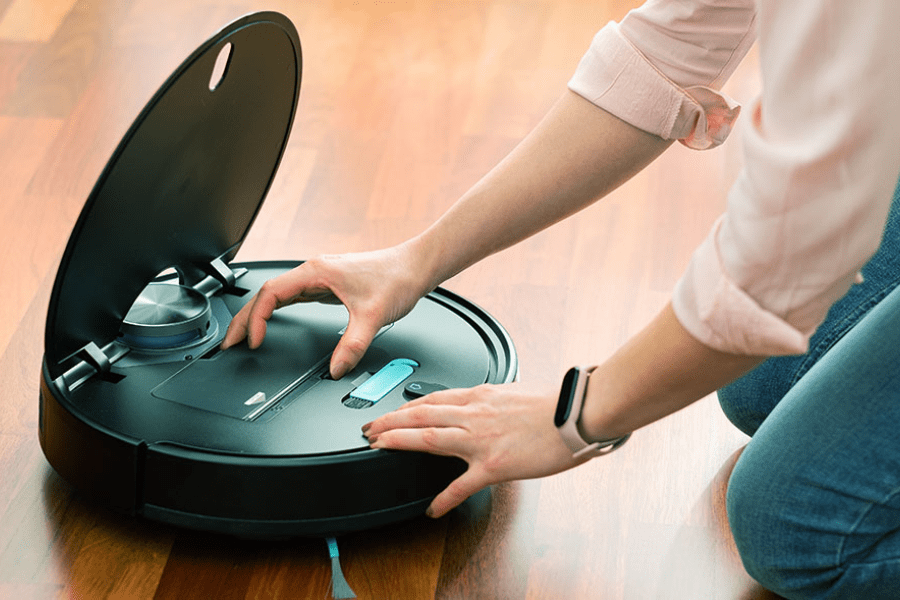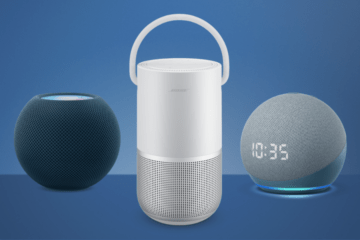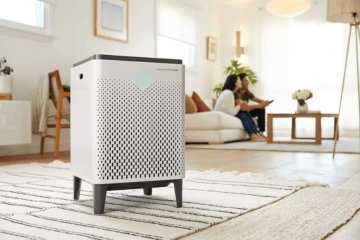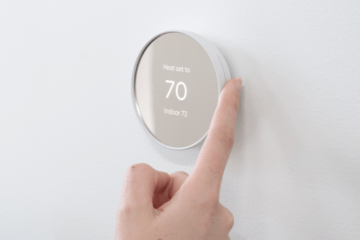The Future of Cleaning: How Robotic Vacuum Cleaners Are Revolutionizing the Industry

Robotic Vacuum Cleaners
Cleaning has always been a tedious task that most people would rather avoid. However, with the advent of robotic vacuum cleaners, the cleaning industry is undergoing a significant revolution. These intelligent machines are changing the way we clean our homes and offices, and their impact is only going to increase in the future. Robotic vacuum cleaners are not only convenient but also efficient and cost-effective. They use advanced technology to navigate through obstacles and clean even hard-to-reach areas. With features such as voice control and scheduling, users can now control their cleaning devices with ease. The future of cleaning is undoubtedly going to be dominated by these smart machines, and it’s only a matter of time before they become a common sight in every household. In this article, we’ll explore the advantages of robotic vacuum cleaners and how they are transforming the cleaning industry.
Benefits of Robotic Vacuum Cleaners
Robotic vacuum cleaners have several advantages over traditional vacuum cleaners. For starters, they are incredibly convenient. You don’t need to be physically present to operate them; you can control them using your smartphone or voice command. You can schedule your cleaning tasks, and the device will automatically start and stop at the designated time. This means that you can have a clean home without even lifting a finger.
Another advantage of robotic vacuum cleaners is that they are efficient. They use advanced sensors and mapping technology to navigate through obstacles and clean even hard-to-reach areas. They can detect dirt and debris and adjust their cleaning accordingly. Some models even have a mapping feature that allows them to create a map of your home, so they know where to clean and where not to.
Robotic vacuum cleaners are also cost-effective in the long run. While they are more expensive than traditional vacuum cleaners, they can save you time and energy in the long run. You can use this time to focus on other tasks or spend time with your family. Additionally, some models have a longer lifespan than traditional vacuum cleaners, which means that you won’t have to replace them as often.
The Market for Robotic Vacuum Cleaners
The market for robotic vacuum cleaners has been steadily growing over the years. According to a report by Grand View Research, the global robotic vacuum cleaner market size was valued at USD 4.7 billion in 2020 and is expected to grow at a compound annual growth rate (CAGR) of 18.6% from 2021 to 2028. The report cites several factors contributing to the growth of the market, including increasing demand for automation in cleaning, rising disposable income, and the availability of advanced features such as voice control and mapping technology.
Several companies are currently dominating the market, including iRobot, Ecovacs Robotics, and Samsung. These companies offer a range of models with different features and price points, making robotic vacuum cleaners accessible to a wide range of consumers.
Features of Robotic Vacuum Cleaners
Robotic vacuum cleaners come with a range of features that make them efficient and easy to use. One of the most popular features is voice control. Many models are compatible with virtual assistants such as Amazon Alexa and Google Assistant, allowing users to control their devices using voice commands. This feature is especially useful for people with mobility issues or those who want to multitask while cleaning.
Another popular feature is scheduling. Users can set their devices to clean at specific times, ensuring that their homes are always clean without any effort on their part. Some models even have a mapping feature that allows them to create a map of your home, so they know where to clean and where not to.
Robotic vacuum cleaners also come with advanced sensors and mapping technology that allows them to navigate through obstacles and clean even hard-to-reach areas. They can detect dirt and debris and adjust their cleaning accordingly. Some models even have a feature that allows them to detect the type of flooring and adjust their suction accordingly.
Advancements in Robotic Vacuum Cleaner Technology
Robotic vacuum cleaner technology is constantly evolving, with manufacturers adding new features and improving existing ones. One of the latest advancements is the use of artificial intelligence (AI) and machine learning (ML) to improve the devices’ cleaning capabilities. These technologies allow the devices to learn from their environment and adapt their cleaning accordingly.
Another recent advancement is the use of LiDAR (Light Detection and Ranging) sensors. These sensors use lasers to map the environment, allowing the device to navigate through obstacles more efficiently. LiDAR sensors are more accurate than traditional sensors and can detect even small obstacles such as cables and toys.
Manufacturers are also experimenting with new shapes and designs for robotic vacuum cleaners. Some models have a D-shape, which allows them to clean corners more efficiently. Others have a flat design that allows them to clean under furniture more easily.
How Robotic Vacuum Cleaners are Revolutionizing the Cleaning Industry
Robotic vacuum cleaners are transforming the cleaning industry in several ways. For starters, they are making cleaning more accessible to people who may not have had the time or energy to clean regularly. They are also making cleaning more efficient, allowing people to focus on other tasks or spend time with their families.
Robotic vacuum cleaners are also contributing to the growth of the smart home market. As more people invest in smart home devices, manufacturers are integrating these devices with other smart home devices such as voice assistants and security cameras. This integration allows users to control their devices from a central hub, making their homes more convenient and secure.
Robotic vacuum cleaners are also contributing to the growth of the circular economy. As more people invest in these devices, manufacturers are offering repair and maintenance services to extend the devices’ lifespan. Additionally, some companies are experimenting with a rental model, allowing people to rent these devices instead of buying them outright.
Future of Robotic Vacuum Cleaners
The future of robotic vacuum cleaners is undoubtedly bright. As technology continues to evolve, we can expect to see even more advanced features and capabilities. For example, some manufacturers are already experimenting with the use of AI and ML to improve the devices’ cleaning capabilities. Others are exploring the use of augmented reality (AR) to help users visualize the cleaning process.
We can also expect to see more integration with other smart home devices. As more people invest in smart home devices, manufacturers are integrating these devices with other smart home devices such as voice assistants and security cameras. This integration allows users to control their devices from a central hub, making their homes more convenient and secure.
Finally, we can expect to see more experimentation with the rental model. As more people become aware of the benefits of robotic vacuum cleaners, they may not want to invest in a device outright. Instead, they may prefer to rent these devices on a short-term basis.
Conclusion
Robotic vacuum cleaners are changing the way we clean our homes and offices, and their impact is only going to increase in the future. They are convenient, efficient, and cost-effective, making them an attractive option for people who want to save time and energy. As technology continues to evolve, we can expect to see even more advanced features and capabilities. The future of cleaning is undoubtedly going to be dominated by these smart machines, and it’s only a matter of time before they become a common sight in every household.














